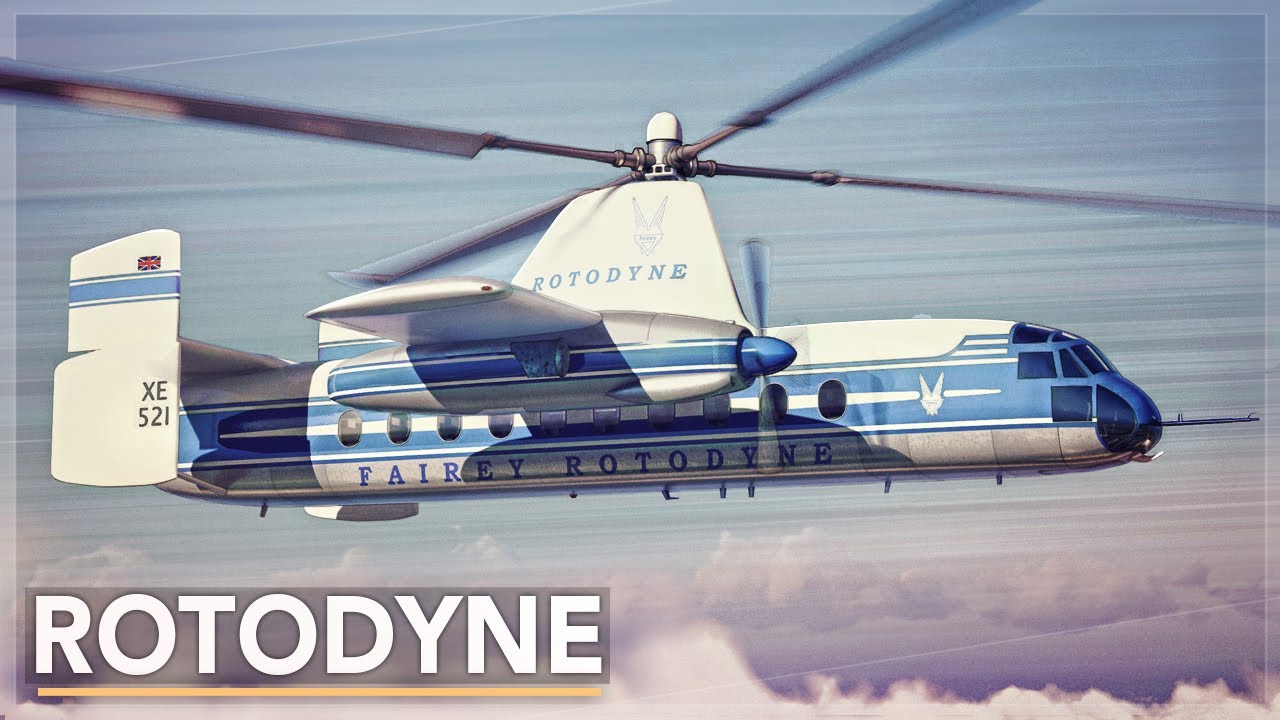5
This Plane Almost Reinvented Travel: What Went Wrong?
yewtu.beWatch More Mustard Videos & Support The Channel: https://nebula.tv/mustard
Support Mustard on Patreon: https://www.patreon.com/MustardChannel
Mustard Merchandise: https://www.teespring.com/stores/mustard-store
Instagram: https://www.instagram.com/mustardchannel/
TikTok: https://www.tiktok.com/@mustardchannel
Facebook: https://www.facebook.com/Mustard-109952378202335
Twitter: https://twitter.com/MustardVideos
Website: https://www.mustardchannel.com/
In the late 1950’s, intercity air travel was on the rise. But while a trip from New York to Boston by airplane might only take about an hour, you’d still need to get to and from the airport. And in many congested cities, that was already taking longer than the flight itself. As a solution, helicopter airlines had begun to crop up in major cities, letting passengers skip over traffic to connect airports with their city centers. But helicopters were ultimately too inefficient to become a viable form of mass transport. The Rotodyne was going to change all that. Taking off from downtown rooftops and heliports, but flying faster, further, and more economically than any helicopter, the Rotodyne would be the quickest way to move from one city centre to the next.
The Rotodyne might have looked like part helicopter, part plane, but it was actually neither. Where a helicopter uses engine power to spin a rotor blade to force air down and create lift, on a Rotodyne the large rotor wasn’t directly driven by a motor. Instead it used a freely-spinning rotor called an autogyro. As air passed naturally through the rotor blades during flight, it caused the rotor spin around like a pinwheel to create lift. The Rotodyne still had wings and a pair of turboprops much like an airplane. But in forward flight, the unpowered spinning rotor lifted more than half the aircraft’s weight. To take off and land vertically and hover, tip jets at the end of each rotor blade would be used to spin up the Rotodyne’s rotor. Once in forward flight, the tip jets were shut off and the rotor would once again spin freely.
When the first Rotodyne prototype took to the skies, it could carry 40 passengers over 700km and reach speeds of over 300km/h, all while being able to land and take off on a space not much larger than the aircraft itself. And after 350 successful test flights, the Rotodyne proved to be safe and capable. But despite plans for an even larger more powerful version, a combination of noise concerns and lack of government support for research and development ultimately led to cancellation of the project.
Select footage courtesy the AP Archive:
AP Archive website: http://www.aparchive.com YouTube: https://www.youtube.com/c/aparchive and https://www.youtube.com/c/britishmovietone
Like the aviation industry posters found in this video? Visit The Aviation Ancestry Database, containing over 80,000 high-quality examples: http://www.aviationancestry.co.uk/
Special thanks to Nick Arehart for helping clean up our audio:
https://twitter.com/airhrt_
Special thanks to: Chiba Cheegoni, Gibbo, Jake Hart, Coby Tang, Cole Gerdemann, Christian Altenhofen, Therandomuser, Justin Will, Jefferson Hu, Jean-christophe, Andrew J. Thom, Erik Hoel, Mark Moran, Colin Millions, Joel Salvador, TOOLCO CORP, Razvan Caliman, Joseph Zadeh, Danny Wolf, Matt Waters, Trent Bosley, Christopher Boyd, Guzman Martin, Travis Sinfield, Liam Klatsky, Jerome Froelich, Xan Daven, Donoteat and Kim Alexander Haustedt for supporting us on Patreon and helping Mustard grow: https://www.patreon.com/MustardChannel
Thanks for watching!
Why does everyone talk about solutions to bypass traffic (for the wealthy of course) instead of solutions to get rid of traffic for everyone? Oh wait, that solution already exists, it’s called trains!



@Shrike502 @HiddenLayer5 Here’s the clip for those following along on Mastodon: https://yewtu.be/watch?v=dkJOm1V77Xg
I’m guessing it’s “car brained” in the sense that it was developed out of 1950s/1960s flying car hype? Or the idea that you fly over the traffic instead of solving it?
Thanks, I’ll put it on my to watch list.
This I can see, but it would be more relevant with a small thing like Robinson R22. Something a businessman would use to zip above traffic and avoid all them yucky proles. But a flying bus with 40 seats, that rotodyne was? Sounds more like something used for passenger transport in complex terrain, i.e. mountains. In fact, USSR did actively use helicopters in Caucasus, where building roads and especially railways is difficult, but people still need to get around.